In the central park of Connaught Place in New Delhi in March, Teco Group (東元集團) chairman Theodore Huang (黃茂雄) roared the engine of a Tata Nano to life.
He was taking the steering wheel again for the first time in 20 years, and on that day he drove as much as 110km around the park in the egg-shaped car.
“It is such an economical and good car,” said Huang, who immediately placed an order for two Nanos and waited six months to have them imported to Taiwan.
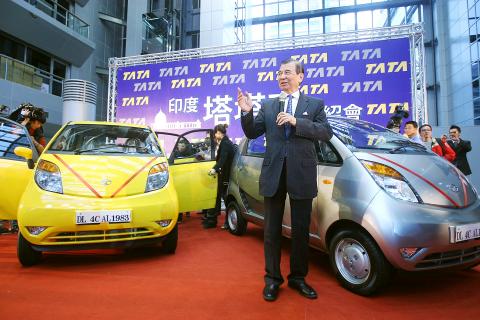
PHOTO: CNA
The Nano is sold in India, its home turf, with prices starting at US$2,900. Huang paid US$4,000 for his model, which has extras such as air conditioning.
At the “Tata Nano Meets the Press” event yesterday, Huang said Teco is studying the feasibility of bringing the Nano to Taiwan — either through a traditional dealership model or via local production.
“We are very interested in working with Tata Motors. It could mean [Teco] would manufacture some auto parts, re-engineer the car in Taiwan or serve as the dealer selling the Nano here,” he said. “This is a vehicle that Taiwanese automakers can mirror the success of.”
If the Nano were to be imported to Taiwan, Huang said it would fall in the price range of between NT$150,000 (US$5,000) and NT$200,000, taking into account all the extra costs, such as commodity taxes.
Yulon Group (裕隆集團) has been selling one of the cheapest cars in the market since January — the four-door Tobe M’Car (pronounced “my car”), a revamped model based on China’s Panda car that retails for about NT$400,000.
When it was introduced early last year, the Tata Nano was billed as a modern-day people’s car: An ultracheap vehicle that would bring greater mobility to the masses of India and, eventually, the world.
The Indian model is a four-door that can seat up to five people, and its air-cooled engine is in the back, like the original Volkswagen Beetle.
The Nano is the brainchild of Ratan Tata, the chairman of the Tata Group, parent company of Tata Motors Ltd, who told his engineers to build a car that would sell for 100,000 rupees (US$2,200) and be affordable for people who would otherwise be making do with motorcycles and scooters.
It is common to see an Indian family of four riding on a motorcycle, with the father up front, the mother sitting sidesaddle with a baby in her arms and a child sandwiched between them.
Despite Teco’s strong interest in having Nanos zipping along Taiwan’s roads, there are still numerous hurdles to overcome, especially with skeptics criticizing for the car’s “fragile” exterior, which they feel poses potential safety concerns.
The Ministry of Economic Affairs said as a prerequisite for importing the Nano, it has to pass collision impact inspections and meet exhaust emissions standards.
In addition, Taiwan has -mandated that new vehicles must meet the Euro 5 emission standards — the standards used to define the acceptable limits for exhaust emissions of new vehicles sold in EU member states — starting in July next year.
“All vehicles produced in India meet the Euro 3 standard and will gradually meet further -requirements of the European standards in the future. [The] Nano has also passed the collision tests in India,” India-Taipei Association deputy director-general Ramu Abbagani said.
“We don’t see any problems for [the] Nano to pass such processes in other markets,” he added.
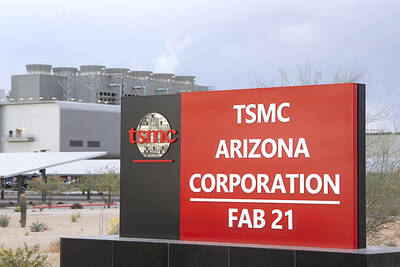
Taiwan Semiconductor Manufacturing Co (TSMC, 台積電), the world’s biggest contract chipmaker, booked its first-ever profit from its Arizona subsidiary in the first half of this year, four years after operations began, a company financial statement showed. Wholly owned by TSMC, the Arizona unit contributed NT$4.52 billion (US$150.1 million) in net profit, compared with a loss of NT$4.34 billion a year earlier, the statement showed. The company attributed the turnaround to strong market demand and high factory utilization. The Arizona unit counts Apple Inc, Nvidia Corp and Advanced Micro Devices Inc among its major customers. The firm’s first fab in Arizona began high-volume production
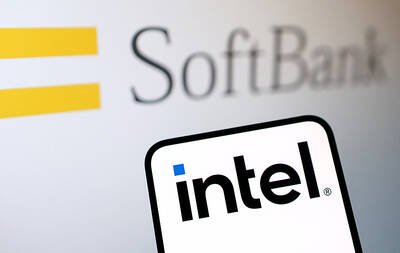
VOTE OF CONFIDENCE: The Japanese company is adding Intel to an investment portfolio that includes artificial intelligence linchpins Nvidia Corp and TSMC Softbank Group Corp agreed to buy US$2 billion of Intel Corp stock, a surprise deal to shore up a struggling US name while boosting its own chip ambitions. The Japanese company, which is adding Intel to an investment portfolio that includes artificial intelligence (AI) linchpins Nvidia Corp and Taiwan Semiconductor Manufacturing Co (TSMC, 台積電), is to pay US$23 a share — a small discount to Intel’s last close. Shares of the US chipmaker, which would issue new stock to Softbank, surged more than 5 percent in after-hours trading. Softbank’s stock fell as much as 5.4 percent on Tuesday in Tokyo, its
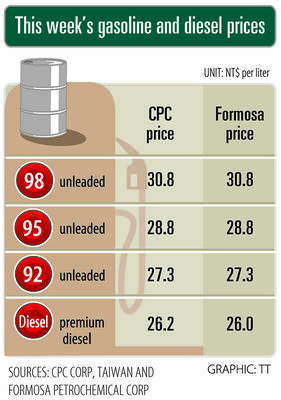
The prices of gasoline and diesel at domestic fuel stations are to rise NT$0.1 and NT$0.4 per liter this week respectively, after international crude oil prices rose last week, CPC Corp, Taiwan (台灣中油) and Formosa Petrochemical Corp (台塑石化) announced yesterday. Effective today, gasoline prices at CPC and Formosa stations are to rise to NT$27.3, NT$28.8 and NT$30.8 per liter for 92, 95 and 98-octane unleaded gasoline respectively, the companies said in separate statements. The price of premium diesel is to rise to NT$26.2 per liter at CPC stations and NT$26 at Formosa pumps, they said. The announcements came after international crude oil prices
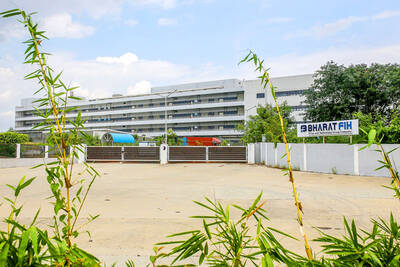
SETBACK: Apple’s India iPhone push has been disrupted after Foxconn recalled hundreds of Chinese engineers, amid Beijing’s attempts to curb tech transfers Apple Inc assembly partner Hon Hai Precision Industry Co (鴻海精密), also known internationally as Foxconn Technology Group (富士康科技集團), has recalled about 300 Chinese engineers from a factory in India, the latest setback for the iPhone maker’s push to rapidly expand in the country. The extraction of Chinese workers from the factory of Yuzhan Technology (India) Private Ltd, a Hon Hai component unit, in southern Tamil Nadu state, is the second such move in a few months. The company has started flying in Taiwanese engineers to replace staff leaving, people familiar with the matter said, asking not to be named, as the